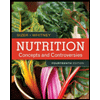In this activity, you will: 1. Observe life forms other than those you studied from Grades 3 through 6, 2. Use a magnifying lens to observe them, 3. Share what you know about these life forms with classmates and groupmates, 3. Compare them with known living things studied in Grades 3 to 6. Materials Needed • Live specimens from teacher Magnifying lens Procedure 1. Look at the live specimen shown by your teacher which is like the photo below: Q1. Is it a plant? Q2. What is its name? 03 What in the
In this activity, you will: 1. Observe life forms other than those you studied from Grades 3 through 6, 2. Use a magnifying lens to observe them, 3. Share what you know about these life forms with classmates and groupmates, 3. Compare them with known living things studied in Grades 3 to 6. Materials Needed • Live specimens from teacher Magnifying lens Procedure 1. Look at the live specimen shown by your teacher which is like the photo below: Q1. Is it a plant? Q2. What is its name? 03 What in the
Chapter3: Ways Of Knowing About Nutrition
Section: Chapter Questions
Problem 8RQ
Related questions
Question

Transcribed Image Text:4G₁ 4.00
8:52 KB/S
f Lite
Facebook Lite
Mj, you have 1 new message from Jere..
Objectives
Activity 1
Are these also plants?
In this activity, you will:
1. Observe life forms other than those you studied from Grades 3
through 6,
2. Use a magnifying lens to observe them,
3. Share what you know about these life forms with classmates and
groupmates,
3. Compare them with known living things studied in Grades 3 to 6.
Materials Needed
.
What are the other living things besides plants
nimals?
Procedure
Q3.
Live specimens from teacher
Magnifying lens
1. Look at the live specimen shown by
your teacher which is like the photo
below:
Q1. Is it a plant?
Q2. What is its name?
Q4.
What is the reason for your answer
in Q1?
Grade 7 Science
Living Things and Their Environment
*Warning: Do not touch the specimen with your bare hands, taste or
smell it, especially those of you who have known allergies
and if the specimen is not eaten. It may be poisonous.
ul to us? Which are harmful?
2. Look at the second live specimen your teacher will show you. It is similar
to the photo below:
Is it a plant?
Q5. What is its name?
Q6. What is your reason for your answer in Q4?
Q8. How are they alike?
Rotor, A.V. (2010) http://avrotor.blogspot.com/2010/03
downloaded 12 March 2012.
3. Compare the two specimens shown by your teacher.
Q7. How are they different?
Q9. Do you know of other living things like the two above?
If so, describe these living things.
Q10. How did you know about them?
Q11. Write their names if you know them.
Grade 7 Science
Living Things and Their Environment.
And,
Photo by A. Encarnacion 2012
a.
Q12. What do you think it is?
Q13. Is it a plant?
Q14. Give a reason for your answer in Q13.,
Warning:
4. Observe the third specimen to be shown by your teacher. She will show
you something like this photo grabbed from an internet source.
http://www.treeboss.net/tree-trunk-splotches.htm.
downloaded 21 March 2012
d.
5. Observe these three other things your teacher prepared for you to
observe:
Grade 7 Science
Living Things and Their Environment
b.
Or, C.
104
Photo credits: potato by A.
Encarnacion, old banana peeling and
bread by R. Reyes, and
http://www.hawaii.edu/reefalgae/in
vasive algae/chloro/enteromorpha fl
exuosa.htm downloaded 12 March
2012 for the "green stuff."
6. Describe what you see in each (a) and (b) or (c).
Q15. (a)
Q16. (b or c)
7. Describe (d).
4/9
105
Q17. (d)
8. What do you think the growths on (a), and (b) or (c) are?
Q18. (a)
Q19. (b) or (c)
9. How about (d), what do you think it is?
Q20.
10. Discuss your answers with your classmates and teacher in cla
Do not touch (a), (b), or (c) with your bare hands. Do not
smell or taste them either. Some sensitive individuals may
be allergic to them.
4/9
106
5/9
What you saw are also living things. There are living things or
organisms that cannot be readily identified by the usual parts of plants we
recognize like roots, stems, leaves, flowers, or fruits though they may have.
the green color and some plant-like parts. There are also living things that
we can see only when we use magnifying lenses. Tomorrow, we will go out
and look for more of these kinds of living things which are not like the
plants we learned about in the lower grades. Bring plastic gloves, and plastic.
bags at least one each.
(019) 4
f
now
⠀⠀
Expert Solution
This question has been solved!
Explore an expertly crafted, step-by-step solution for a thorough understanding of key concepts.
Step by step
Solved in 2 steps

Knowledge Booster
Learn more about
Need a deep-dive on the concept behind this application? Look no further. Learn more about this topic, biology and related others by exploring similar questions and additional content below.Recommended textbooks for you


Lifetime Physical Fitness & Wellness
Health & Nutrition
ISBN:
9781337677509
Author:
HOEGER
Publisher:
Cengage

Nutrition: Concepts and Controversies - Standalo…
Health & Nutrition
ISBN:
9781305627994
Author:
Frances Sizer, Ellie Whitney
Publisher:
Brooks Cole


Lifetime Physical Fitness & Wellness
Health & Nutrition
ISBN:
9781337677509
Author:
HOEGER
Publisher:
Cengage

Nutrition: Concepts and Controversies - Standalo…
Health & Nutrition
ISBN:
9781305627994
Author:
Frances Sizer, Ellie Whitney
Publisher:
Brooks Cole

Essentials of Pharmacology for Health Professions
Nursing
ISBN:
9781305441620
Author:
WOODROW
Publisher:
Cengage